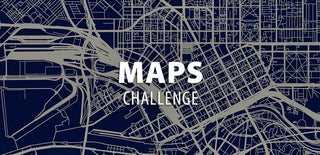Introduction: My Way IS a Highway Game
There are times when you see a theme for an Instructables challenge and you say, "Oh, yeah! I could do something," and that's when you can't find what you need...like the road atlases I'd bought at a book sale. THEN...at the last minute, you find something...like a bookcase full of old National Geographic Magazines, and a lot of them contained...MAPS!
SO, an idea was born...the My Way IS a Highway Game!
Players compete to travel from their Home piece to their opponent's, only using major highways.
What do you need?
- A Map with highways marked. Road maps of the United States or groups of states are really good for this.
- Posterboard. If it's not quite as large as the map, you can trim the map.
- Glue. I tried using a glue stick, but it didn't work very well, so I used tacky glue. A glue gun would make it lumpier than I wanted.
- Scissors. Some people prefer cutters. I don't.
- If Needed. Ruler or straight edge, and pencil or pen to divide pieces, if there are no area grids on your maps.
- Optional: Zippered plastic bag or Rubber bands. Use them for storing the game pieces.
Step 1: Getting Sticky With It
To start making the game, glue the chosen map to the posterboard.
- Choose which side of the map you like best. Glue the other side to the posterboard.
- My first attempt, I used a glue stick. It didn't work very well. My second try, I used tacky glue--much better, although I still needed to do some reinforcement in spots.
- If the map is larger than the posterboard, try to put the board in the area you want the most.
- If the map is smaller than the posterboard, you can add another map to the mix.
Step 2: A Cut Above the Rest
Once the glue dries, begin cutting the map into playing pieces. First, cut the glued map into relatively even strips.
- The National Geographic map of Ohio, Indiana, Illinois, and Kentucky that I used had longitude and latitude lines on it, and cutting along those lines gave rectangles that were 3 5/8" by about 2 1/2" in size. Dropping off pieces that had nothing of those states, or only had tiny bits of the states, I wound up with 44 playing pieces.
- If your map is divided into A-B-C and 1-2-3 sections, use those lines as guides for your cutting.
- If there are no clear grid markings on the map, use a ruler and straight-edge to make even lines, horizontally and vertically, and cut there.
Step 3: I Fall to Pieces
Once the map and backing are cut into strips, use the crossways lines printed or drawn on it to cut the strips into more-or-less even pieces.
- If some of the edge pieces don't have the actual map on them, or only a tiny part of the piece is the map - and it has no major highways (the map I used marked highways/freeways in yellow) - you don't need to use them as actual playing pieces.
Step 4: Stick-to-it-iveness
Once the map is cut into rectangles, squares, or whatever shape you managed to create, check the playing pieces to see that they are securely glued to their posterboard backing. If some of the edges are unglued, take the glue and squeeze a bit into the gaps to make things stick.
Step 5: Ready?
Once you have your playing pieces ready, it's time to...
Step 6: Let's Go!
...Play the Game!
To start, place the playing pieces face down. Each player picks one piece, their Home Piece, and places it on the table, floor, or wherever you will play, about 2 to 3 feet from the opponent's piece. The player with a highway on the piece with the highest number becomes Player Number One. That player deals seven playing pieces to each player.
Step 7: Connect the Highways
Player One places a playing piece from their pile so that a major highway touches a major highway on the player's Home Piece. Players alternate, trying to make a chain of highways to connect their Home Piece to the opponent's Home Piece.
Step 8: Nowhere to Go?
If the player, when it is their turn, has no playing pieces that have major highways, the player may discard a non-highway piece and draw a piece from the pile, taking the place of the turn.
If the player plays all the pieces they were dealt, but have not finished the game, they may draw seven pieces from the pile, and play continues.
Step 9: Finish the Game!
when one player connects their highway chain to their opponent's Home Piece, the game is over...or you can play it again!
Step 10: NOTES
- For 3 or More Players--Place a Center Piece on the playing surface, and place each Home Piece about the same distance from the Center Piece. The goal of the game is to make a chain of playing pieces from the Home Piece to the Center Piece.
- If one player's playing piece is played on top of another player's line of pieces, imagine an invisible overpass and continue playing.
HAVE FUN...and vote for this instructable on the 2020 Maps Challenge.

Participated in the
Maps Challenge











